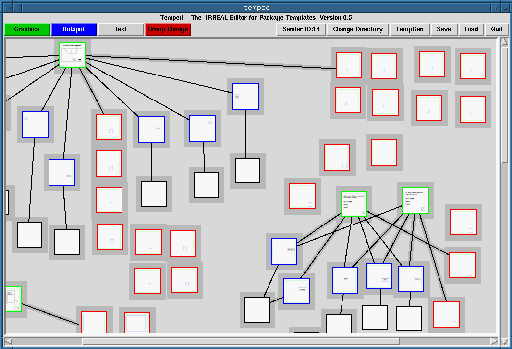
Figure 1: Screenshot of the hyperdocument editor. Different colors indicate different types of data. Lines indicate links. Documents are represented by thumbnails. Grouping is indicated by highlighting subgraphs.
Today's standard for infrared communication between computing devices is set by the IrDA organization [1]. Many contemporary devices from laptops and PDAs to printers and mobile phones contain IrDA ports although this might change at some point with the widespread availability of bluetooth[3]. The IrDA port in the Palm Pilot PDAs initially was meant to enable the devices to exchange data such as business cards, notes or applications between each other. The IrDA standard limits the range of these transmissions to a distance of which is perfectly acceptable for the original purpose. If we wanted to build an infrared network in the ParcTAB manner, this range would, however, be far too short. Since the original approach was to use off-the-shelf devices without any additional hardware, this situation can only be helped on the other side of the transmission, namely the senders. By using relatively strong transmitters and making the PDAs only listen to their data, we were able to bridge distances up to , but at the cost of giving up a bidirectional connection. We could, however, achieve a certain interactivity of the broadcast presentations by adapting and extending a principle from the European video text system. Video text broadcasts a certain number of text pages, each of which has a unique ID. By selecting different pages by their ID a user can effectively browse within this information space and pages can contain hyperlinks to other pages. All pages are broadcast repeatedly and no back channel is needed, but since bandwidth within the TV signal is rather limited, pages have to be cached in the TV set and from the point of turning it on it can take a while until a certain page becomes available. One special page, however, is broadcast more often than all the other pages. This page has the table of contents which needs to be loaded quickly.
We have adapted and extended this principle by assigning relative probabilities to each packet being broadcast. Furthermore packets can be clustered in order to ensure that several pieces of information become available at the same time. An initial presentation is sent more often via the infrared data stream. Each page has a relative importance assigned to it and is transmitted more or less often according to this value. In this way it is possible to at least statistically assign different average transmission times to different parts of the localized data and while some top level information becomes available almost immediately (mostly within less than a second), other bits of information that will only be needed after some interaction can afford to take longer to be received. Transmission time can effectively be 'hidden' behind interaction time and isn't noticed by the user.

Figure 1: Screenshot of the hyperdocument editor. Different colors indicate different types of data. Lines indicate links. Documents are represented by thumbnails. Grouping is indicated by highlighting subgraphs.